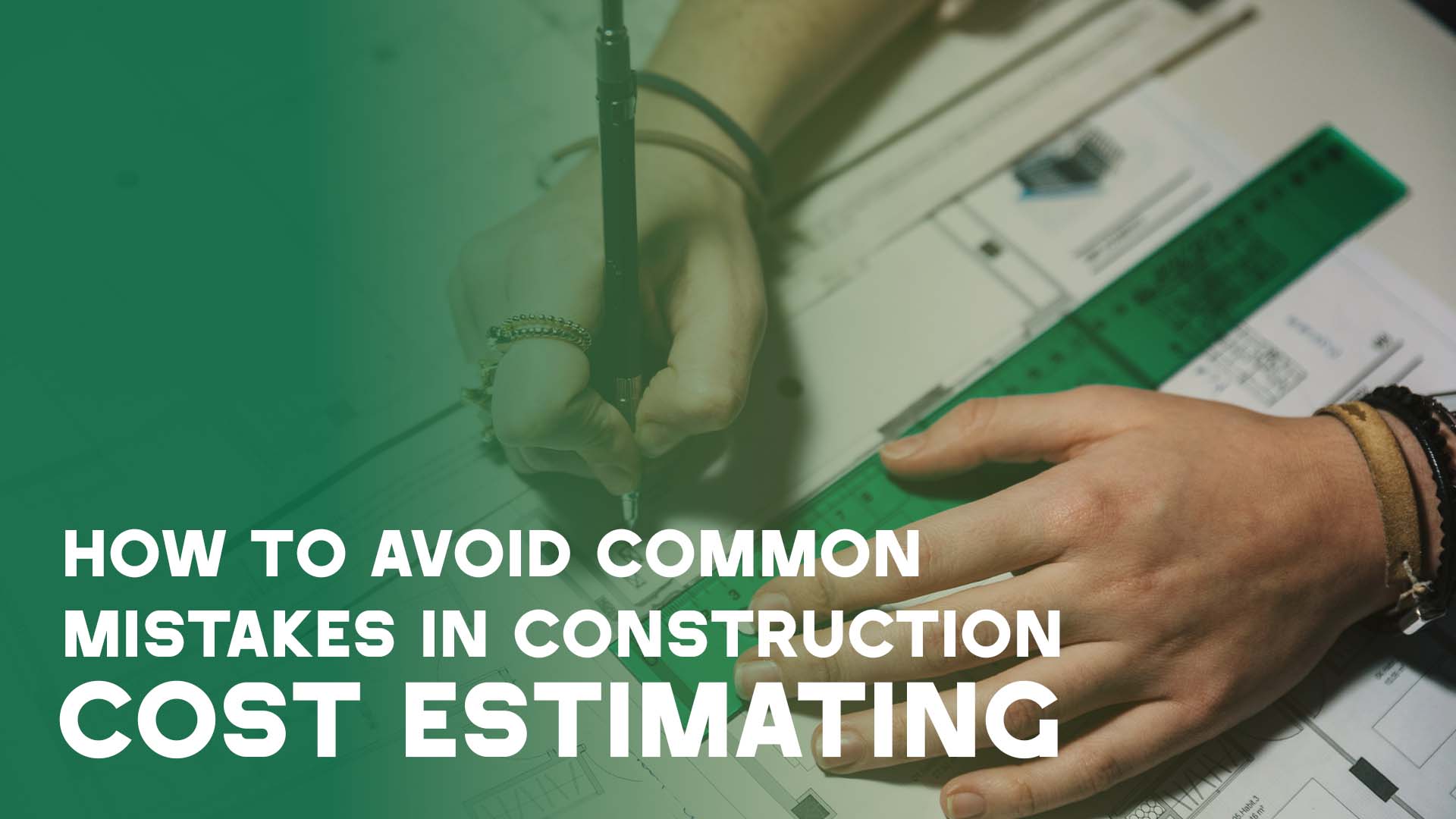Imagine this: You’re halfway through building a house, and suddenly, your budget is blown. Workers are waiting for paychecks, material prices have spiked, and the client is furious. What went wrong? Chances are, the cost estimate was off.
Construction cost estimating is like drawing a map for your project. If the map is wrong, you’ll get lost and fast. Whether you’re a contractor, project manager, or DIY enthusiast, avoiding common estimating mistakes saves time, money, and stress. Let’s break down the biggest errors (like underestimating labor, ignoring market changes, or missing details) and how to fix them.

1. Underestimating Labor Costs: The Silent Budget Killer
“We’ll just hire a few workers. How expensive could it be?”
Labor costs are sneaky. They seem simple at first but can balloon quickly. Here’s why:
- Skill levels matter: A rookie might charge less but work slower.
- Overtime adds up: Tight deadlines often mean paying extra hours.
- Unplanned delays: Bad weather or equipment failures mean workers sit idle (but still get paid).
How to Avoid This Mistake:
- Break down tasks: List every job (e.g., framing, plumbing) and estimate hours per task.
- Research local wages: A carpenter in New York costs more than one in Texas.
- Include training time: New hires might need a week to learn your systems.
- Track productivity: Use apps like Procore or Buildertrend to monitor progress.
2. Ignoring Market Fluctuations: When Prices Go Crazy
“Material prices were low last month. Let’s lock in the budget!”
Remember when lumber prices tripled during COVID? Market swings can wreck your estimate. Materials like steel, concrete, or even paint change prices based on demand, supply chains, or global events.
How to Avoid This Mistake:
- Check historical trends: Websites like Trading Economics track material prices.
- Talk to suppliers: Ask, “Will these costs hold for six months?”
- Add price clauses: Use contracts that adjust costs if materials rise by 10% or more.
- Buy early: Purchase critical materials upfront if prices are rising.
Also Read: Data-Driven Estimation: How Analytics Is Shaping Modern Construction
3. Missing Scope Details: The Devil’s in the Details
“We’ll figure out the electrical work later. Let’s start digging”
Starting without a clear plan is like baking a cake without a recipe. Missing details (e.g., forgetting permits or landscaping) lead to surprise costs.
How to Avoid This Mistake:
- Create a detailed scope document: List every task, from digging foundations to installing doorknobs.
- Use checklists: Apps like PlanGrid help track project phases.
- Review with your team: A second pair of eyes catches missed items.
- Get client sign-off: Ensure everyone agrees on the scope before breaking ground.
4. Forgetting Permits and Regulations: The Hidden Fees
“Permits? I thought the city handled that!”
Permits, inspections, and zoning laws aren’t glamorous, but skipping them means fines or work stoppages.
How to Avoid This Mistake:
- Research local rules: Visit your city’s website or talk to a permit expediter.
- Budget for fees: Permit costs vary widely (e.g., $500 for a shed vs. $10,000+ for a commercial building).
- Include time for approvals: Some permits take weeks to process.
5. Using Outdated Data: The “Last Year’s Prices” Trap
“My 2019 cost book says drywall is $10 per sheet”
Construction costs rise yearly. Relying on old data leads to underbidding.
How to Avoid This Mistake:
- Update your databases: Use software like RSMeans or CostX for real-time pricing
- Attend industry webinars: Learn about new materials or cost trends.
- Network with peers: Local contractor groups share price updates.
6. Poor Communication: When Left Hand Doesn’t Know What Right Hand Is Doing
“Wait, the architect wanted marble floors? I budgeted for laminate”
Miscommunication between architects, contractors, and clients leads to costly redos.
How to Avoid This Mistake:
- Hold weekly meetings: Use Zoom or Microsoft Teams if teams are remote.
- Use shared docs: Google Sheets or AutoCAD keeps everyone on the same page.
- Assign a project manager: One person tracks updates and changes.
7. Skipping Contingency Funds: Expect the Unexpected
“What could go wrong? It’s just a small renovation”
Every project has surprises broken pipes, bad soil, or even a rare bird’s nest halting work. Without a backup fund, you’ll pay out of pocket.
How to Avoid This Mistake:
- Add a 10–20% buffer: Base this on project complexity (e.g., 10% for remodels, 20% for new builds).
- Do a risk assessment: List potential issues (e.g., weather delays) and their costs.
Conclusion:
Great cost estimating isn’t about magic it’s about avoiding pitfalls. By planning for labor, market changes, and tiny details, you’ll create budgets that stick. Remember: Update your data, talk to your team, and always expect surprises.
Ready to start your next project? Grab a coffee, open a spreadsheet, and tackle that estimate like a pro. Your wallet (and clients) will thank you.
